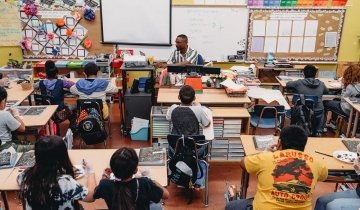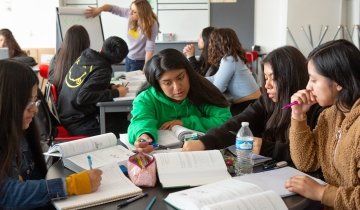Throughout the pandemic, I have reflected on what lessons we might learn from this crisis. I’ve thought there must be some deeper meaning that we could extract that might prove helpful as things return to some semblance of “normal.”
In April of last year, acclaimed author Arundhati Roy wrote, “Historically, pandemics have forced humans to break with the past and imagine their world anew. This one is no different. It is a portal, a gateway between one world and the next.” Before the pandemic, our society showed clear signs of strain and stress. Inequality was growing, our political systems and parties were unable to solve the problems that eat away at our quality of life, and our environment was deteriorating rapidly. Is it possible to use this moment to forge a path that is more sustainable, equitable and beneficial for all of us?
This question is particularly pertinent to schools. While the logistics involved with reopening safely have taken precedent, it’s not too early—or too late—to think about whether we can use this disruption as an opportunity for positive, lasting change. Too many of our schools are reproducing patterns of inequality. Despite years of effort and reforms, the achievement gap based on race and socioeconomic status is largely unchanged. Kids are under pressure to earn high grades and test scores, but how many are truly inspired by what they learn?
Educators have not fared much better. Districts are grappling with severe teacher shortages—not from a lack of qualified teachers, but because too few are willing to accept teaching jobs. Principals and superintendents, especially in urban school districts, are frequently asked to do more with less. Under relentless pressure to demonstrate evidence of improvement in test scores and graduation rates, many are questioning their long-term commitment to the education profession.
Our kids deserve to be in schools where they are challenged and supported. Parents have a right to know that their children are safe and being well-prepared for the future. And it is reasonable and fair for educators to expect that their service be honored and respected, and that they will not be blamed for failing to solve problems over which they have no control.
To create the schools we need, we must have education policies that prioritize high-quality teaching and learning opportunities over standardized testing and a narrow focus on achievement that ignores the social, psychological and emotional needs of kids. We also need to build systems of support for schools so that social workers, psychologists, internships and excellent after-school and preschool programs are widely available. Most of all, we need a vision and plan for creating schools capable of meeting the needs of all the students they serve.
For those who’ve been in the trenches of education, creating such schools and policies may seem unattainable. It’s easy to see how obstacles related to state regulations, poverty, union contracts and politics make change difficult. However, if we are willing to learn from the schools that already serve as beacons of hope and opportunity, and if we allow ourselves to imagine and act on possibilities for change, there’s no reason why returning to a subpar status quo must be inevitable.
Rather than walking through the gateway to this new world, “dragging the carcasses of our prejudice and hatred, our avarice, our data banks and dead ideas, our dead rivers and smoky skies behind us,” we can, Roy writes, “walk through lightly, with little luggage, ready to imagine another world. And ready to fight for it.”





